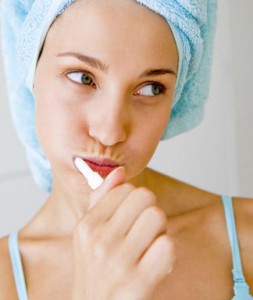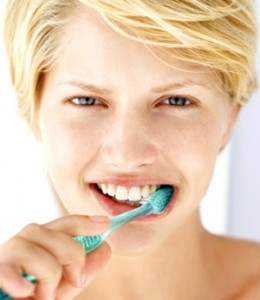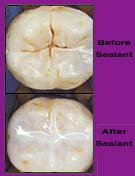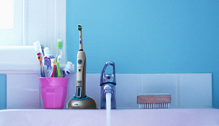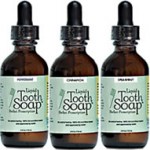If you are a victim to the fear of dentists, also known as dental phobia, or dentophobia, you don’t have to suffer alone. Leaving it as it is will not help as eventually you will need to visit a dentist one day, either for extractions or to get dentures or other treatments, so why not make it a pleasant one rather than one that requires chains to strap you down or putting yourself into a deep sleep before any treatment can be performed on you? Continue reading
Monthly Archives: September 2011
Toothbrush Techniques
Many toothbrushing methods have been introduced during the last 50 years and most are identified by an individual’s name, such as Bass, Stillman, Charters, or by a term indicating a primary action to be followed, such as roll or scrub. No one method shows consistently better results in removing plaque than scrubbing. Most people brushing with an instructed professional method are not aware that they are brushing in a specific way. Therefore it may be more effective for individuals to improve their own method. Continue reading
Buying Dental Gold
Dental scrap gold is fast becoming an additional resource for people wishing to sell gold. Dental scrap gold consists of any gold that has been used in the mouth and is worth more sold than kept. It can include any failed, damaged or deteriorated gold or silver crowns, any bridges, PFM’s (porcelain fused to metal), PFG’s (porcelain fused to gold), Inlays, Gold Partials and more. In fact here is a list of the dental scrap including gold, silver and platinum that can be sold, and these can be with or without bone or porcelain: Continue reading
Toothbrushing Basics
Various methods of tooth brushing have been recommended and classified to the type of motion performed by the brush. In reality it does not matter exactly how a toothbrush is used, as long as plaque is effectively removed without trauma to the gums. Where plaque still persists, the dental professional should teach effective oral hygiene. The recommended toothbrushing method will depend upon the dexterity of the individual as well as the position of the teeth. The vibratory Bass technique is the most useful and will be described in detail. Continue reading
Fear of Dentists (No more!) – Part 1
What is the first thing that comes to mind at the mention of a dentist? Does it send shrills down your spine as you start imagining long needles and sharp probes and high-speed drills all in your mouth at once, cutting into your teeth while tied down to the dental chair? Or is it like a leisurely stroll to the park that you take every once in awhile and you absolutely look forward to each visit? If it’s the latter, congratulations, you’re a rare species! But if it’s the former, and you can clearly remember how you so often had to cling onto the staircase railings so as not be dragged to the dentist’s when you were young, then you most probably have the dental phobia/dentophobia, or fear of dentists. Some people suffer from such a condition to a greater degree than others. It can be any one of the following:
Continue reading
ADA Sealant Coating Specifications
The American Dental Association (ADA) investigates and analyzes all professional aspects of the dental profession, including tooth sealants. According to the ADA website, sealants are essential to prohibiting the harmful expansion of tooth pits, breakages and decay in adults and children. Specifically, studies indicate that dental work of nearly one in three American children between the ages of six and 19 years have undergone sealant coating. The likelihood of developing pit and fissure decay begins early in life, so children and teenagers are obvious candidates for dental sealant application. But adults can benefit from sealants as well. Continue reading
Do Electric Toothbrushes Really Work Better Than Regular Ones?
In most developed countries, the number of powered or electric toothbrush products sold has increased dramatically in recent years. An electric toothbrush is a toothbrush usually powered by a battery to move the brush head. Most modern electric toothbrushes have a small, circular head which performs oscillating (having periodic vibrations), rotating or counter-rotational movements. Some models have timers which give useful feedback to the user on the time spent on brushing. Continue reading
How to Brush Your Teeth with Tooth Soap
Tooth soap is the product that replaces the usual toothpaste products with far more natural, gentle teeth-washing ingredients. Because let’s face it: You don’t actually need to “scrub” your teeth with sand, chemical preservatives and sweeteners. Some toothpaste products are quite harmful — they’re loaded with synthetic chemicals that simply can’t be considered safe for human consumption by any reasonable person. Cleaning your teeth only requires a type of soap, some water and some brushing action. You don’t need dyes, sweeteners, sand and other unnecessary ingredients. Continue reading
Root Canal Treatment vs. False teeth
    When there is a cavity in a tooth, you can have it filled; but what happens if caries has spread deep into your tooth, such that your tooth is infected beyond salvage point? There are several options that you may go for:
How to Reverse Decalcification
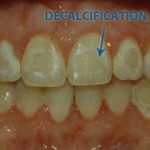
What is decalcification?
Decalcification simply means loss of calcium from teeth.
What causes decalcification of tooth enamel?
Bacteria found in dental plaque will convert carbohydrate and sugars into acids. This acidic condition will cause minerals to leach out from enamel. It is also known as decalcification. High-sugar diets, lack of good oral hygiene practices are the main factors that contribute to decalcification of tooth enamel. Continue reading
